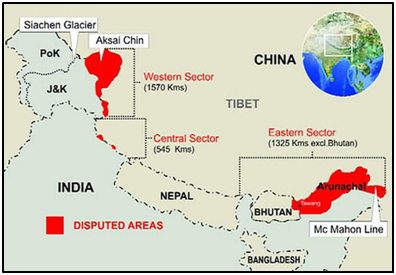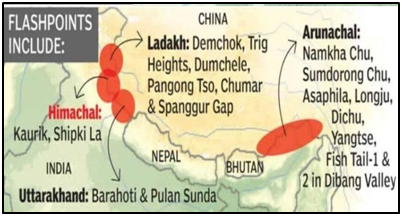Editorials & Articles Analysis – 15th Feb 2024
Editorials & Articles Analysis – 15th Feb 2024
A demand that could hamper gender equality
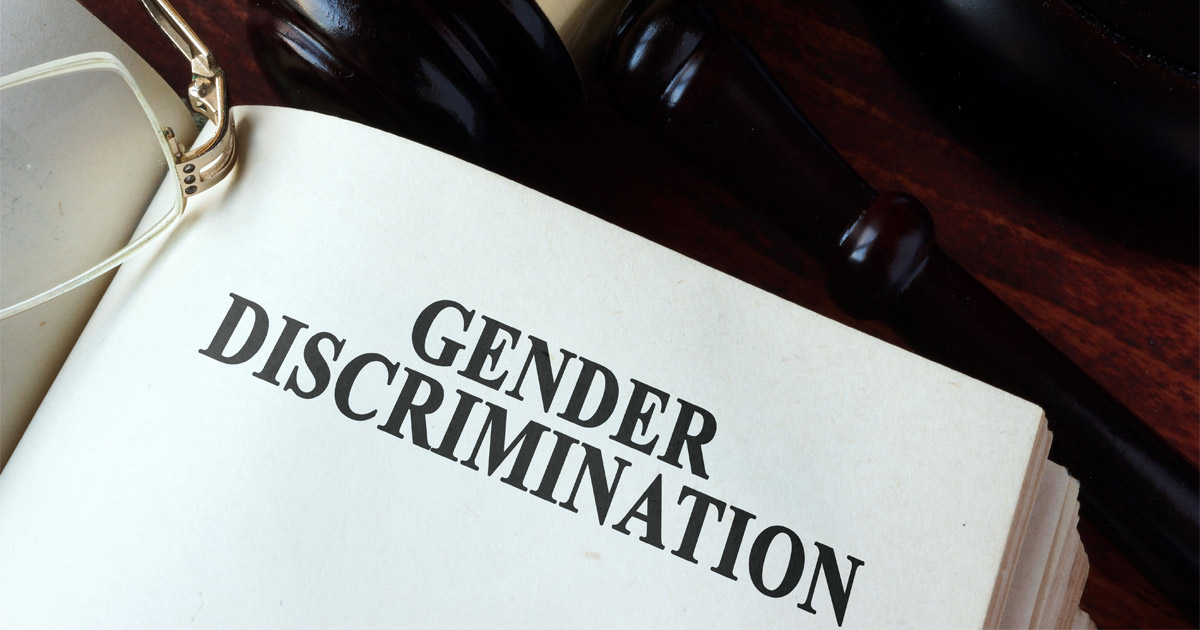
Context
- This article discusses the complexities surrounding the Sabrimala temple issue, questions the efficacy of mandatory paid menstrual leave, and advocates for nuanced, case-specific support to promote genuine gender equality.
- Background: The Sabrimala temple controversy brought attention to the discrimination against menstruating women, challenging traditional beliefs.
- Gender Equality: The struggle aims to eliminate discriminatory practices related to menstruation and promote gender equality.
Paid Menstrual Leave: A Counterproductive Move?
- Challenges of Menstrual Cycles: While acknowledging the challenges of menstrual cycles, labelling all women for paid leave may trivialize the women empowerment movement.
- Global Gender Gap: The World Economic Forum’s 2021 report indicates a widening gender gap, with 84 cents earned by women for every dollar earned by men.
Concerns Regarding Special Status for Menstruating Women
- Social Stigma: Granting special status may validate social stigma around menstruation, exacerbating period shaming in a country where it is considered ‘impure.’
- NFHS Report: The recent National Family Health Survey highlights the prevalent use of cloth for menstrual protection, leading to health risks due to insufficient awareness and societal taboos.
Japan’s Experience: Unintended Consequences
- Japanese Policy: Japan provides leave for painful menstruation, but it is mostly unpaid and unused, contributing to workplace disparities and gender inequality.
- Enforcement Challenges: Implementing paid leave raises concerns about misuse and acceptable enforcement methods, as seen in incidents of forced checks in educational institutions in India.
On-going Struggles for Women’s Rights
- Combat Roles: Women’s fight for equal evaluation and roles in ground combat continues, highlighting on-going gender disparities.
- Corporate Equality: Women in corporate organizations are advocating for equal pay, emphasizing the need for gender parity.
Recognizing Diverse Experiences
- Individualized Support: Acknowledging the diverse nature of menstrual experiences is crucial, advocating for inclusive and case-by-case support rather than blanket policies.
Conclusion:
- In conclusion, while addressing menstrual challenges is essential, blanket policies such as mandatory paid leave risk unintended consequences.
- Advocating inclusivity and case-specific support ensures a nuanced approach to menstrual issues, fostering genuine gender equality.
Rescuing grace from disgrace
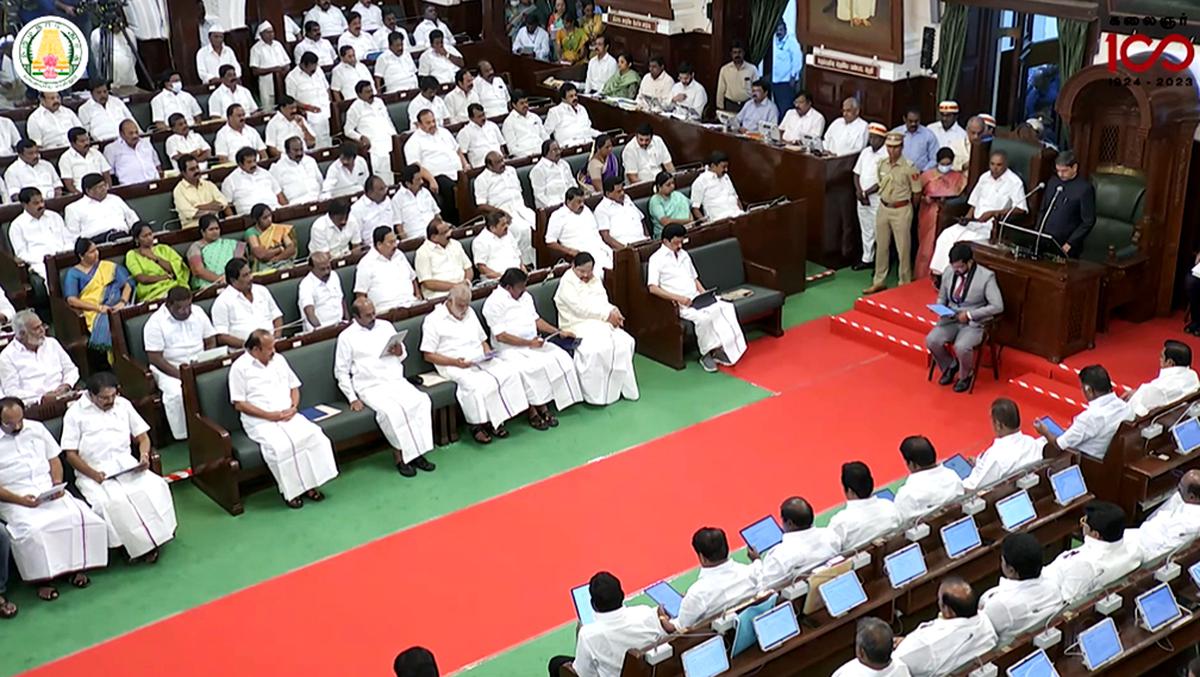
Context
- The article discusses the traditional addresses of the President and Governors in India, emphasizing controversies, proposed reforms, and the challenge of balancing political interests during these ceremonial events.
Introduction:
- The addresses of the President of India and Governors to Parliament and Legislative Assemblies respectively are described as ‘customary,’ ‘ceremonial,’ and ‘ritualistic.’
- These events, deeply embedded in Indian political culture, involve elaborate ceremonies and speeches.
- The tradition of these addresses follows British practice, with the speeches drafted by the government of the day.
Presidential Engagement:
- Venkataraman, President from 1987 to 1992, actively reviewed and modified the draft speeches received from the government.
- He suggested a reform inspired by the concise nature of the British Throne Speech, aiming to save time and reduce tension during the opening ceremonies.
Presidential Involvement:
- President K.R. Narayanan (1997-2002) exhibited meticulous attention to detail, with changes suggested by him being universally acknowledged for their pertinence and propriety.
Governor’s Role And notable instances:
- As the Governor of West Bengal, the author (Gopal Krishna Gandhi) suggested changes to draft addresses, and Chief Minister Buddhadeb Bhattacharjee readily accepted them, even resorting to last-minute corrections for oversight.
- As an officiating Governor of Bihar, the author (Gopal Krishna Gandhi) delivered a flawless speech without interruptions, earning praise from Chief Minister Nitish Kumar.
Controversies and Challenges:
- The article highlights the rising frequency and intensity of controversies over Governors’ addresses in Legislative Assemblies.
- The root cause is identified as the dichotomy between the agency writing the speech and the one delivering it.
Proposed Solution:
- The author suggests a solution inspired by President Venkataraman’s idea, proposing that the Head of State only delivers a brief outline of legislative business, leaving the detailed addresses to the Motion of Thanks that follows, similar to British Parliament.
Challenges for Reform:
- The article acknowledges the potential reluctance of governments to forego the opportunity to showcase their accomplishments and plans during the opening ceremonies.
- The need for innovative and self-denying Chief Ministers to initiate reforms is emphasized to rescue the tradition of these addresses from increasing controversies and tensions.
Conclusion:
- In conclusion, the article underscores the urgency for innovative Chief Ministers to initiate reforms in the ceremonial addresses of Presidents and Governors, highlighting the need to rescue these traditions from escalating controversies and tensions.
| Tussel between Governor – State Executive |
Reasons:
Implications:
Way Forward:
|
Farmers’ protest, lessons unlearnt
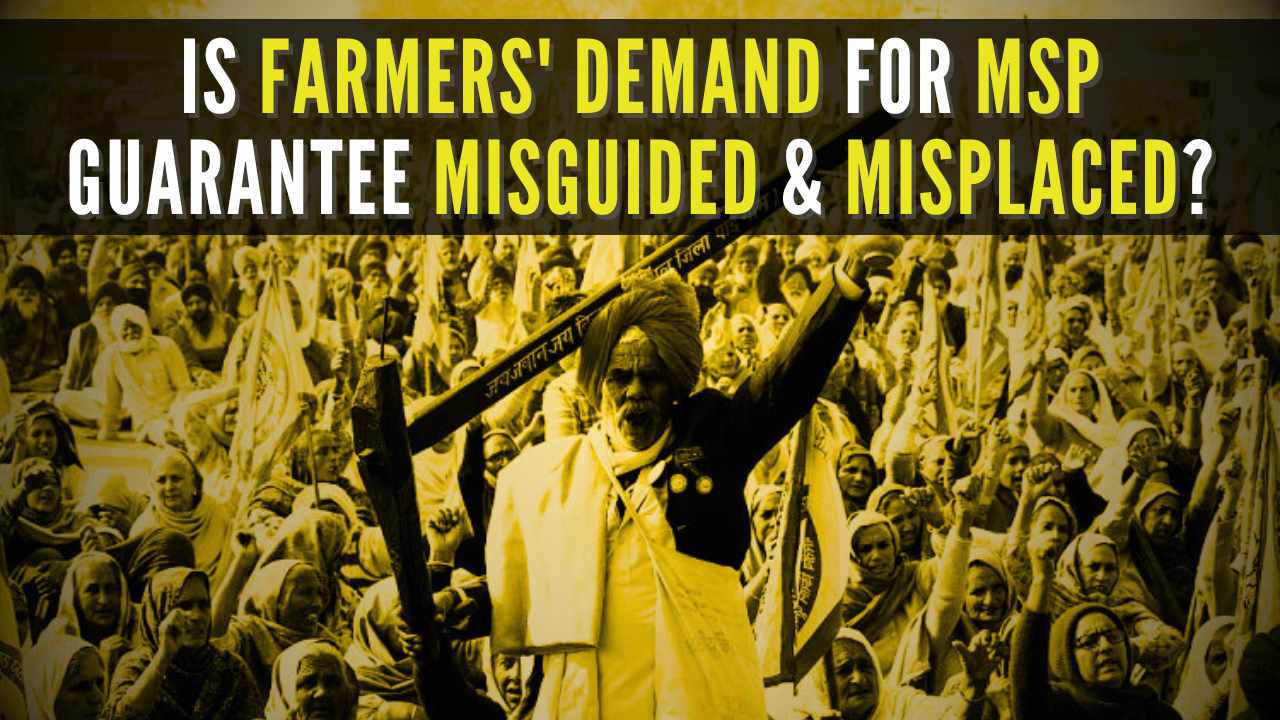
| Context: |
|
Distinct Characteristics of Current Protests:
- The ongoing protests by farmers, although reminiscent of the 2020 farmers’ agitation, exhibit notable differences in terms of leadership, demands, and regional participation.
- Spearheaded by the Samyukt Kisan Morcha led by new figures like Jagjit Singh Dhallewal and Sarwan Singh Pandher, the current protests showcase a Punjab-centric focus, contrasting with the broader regional participation seen previously.
Fragmentation within Farmer Unions:
- Unlike the unified front presented in the previous protests, the current agitation witnesses fragmentation among farmer unions, each vying for prominence and engaging in a game of one-upmanship.
- This fragmentation complicates negotiations with the government and hampers the formation of a cohesive protest strategy.
Structured Demands and Government Response:
- The demands put forth by the protesting farmers reflect a more structured agenda, including legal guarantees of Minimum Support Price (MSP), withdrawal from the World Trade Organization, and justice for victims of past incidents.
- However, the government’s response remains reactionary, characterized by heavy barricading of borders, internet shutdowns, and reluctance to address the farmers’ grievances effectively.
Lessons from Past Protests:
- The current protests underscore lessons from the 2020 farmers’ agitation, emphasizing the importance of stakeholder consultations, long-term solutions, and political will in addressing agrarian crises.
- The delayed response to promises made by the government and perceptions of political opportunism further fuel discontent among farmers, highlighting the need for proactive governance and engagement with grassroots concerns.
Addressing Agricultural Challenges:
- Beyond the immediate protests, the underlying agricultural crisis necessitates holistic solutions addressing food sovereignty, security, and farmer livelihoods.
- Political will and concerted efforts are required to tackle systemic issues and provide sustainable support to the farming community, moving beyond short-term electoral considerations.
Conclusion:
- As India navigates the complexities of pre-election dynamics, including farmer protests and political posturing, proactive governance, and inclusive dialogue emerge as imperative.
- The challenges posed by agrarian distress and socio-economic disparities demand comprehensive strategies and genuine commitment from political leadership to foster sustainable development and address the root causes of discontent within the farming community.
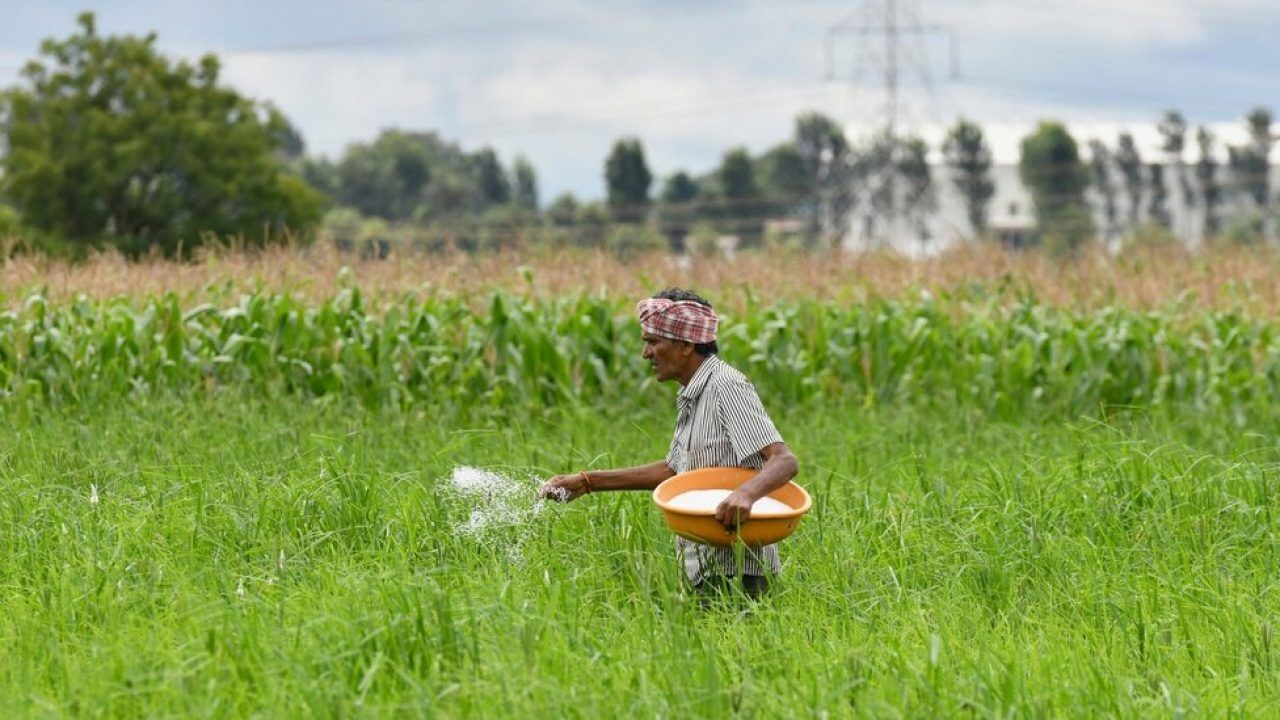
Why in News?
- The Government of India’s headroom to accede to the protesting farmers demand for a legal guarantee of minimum support price (MSP) is somewhat limited.
- This is because India is under pressure on its farm subsidies at the World Trade Organisation (WTO), with the latest attack by an influential group of 19 agri exporting countries.
What’s in Today’s Article?
- Why are India’s Agri Subsidy Programmes Facing Challenges in the WT0?
- Attack on India’s Agri Subsidies by Influential Agri Exporting Countries
- Challenges Ahead for the Government of India
- Way Ahead for India
Why are India’s Agri Subsidy Programmes Facing Challenges in the WT0?
- While India’s per farmer subsidy is abysmally low compared to what countries such as the US offer, the WTO rules do not consider subsidies on a per-farmer basis, thereby being heavily loaded against developing countries.
- For example, India’s total rice production in 2019-20 stood at $46.07 billion and it gave subsidies worth $6.31 billion (or 13.7%), which is above the 10% limit.
- However, India’s subsidy to farmers comes in at $300 per farmer, compared to $40,000 per farmer in the US.
- Notably, India cannot be dragged into a dispute over its subsidies as it is protected by the ‘Peace Clause’ that was agreed by the WTO members during the Bali ministerial in 2013.
- But due to some of the provisions in the clause being ambiguous, India is open to face disputes.
- This means, if new schemes are to be implemented, then for those products India has to comply with the 10% subsidy ceiling and they will not be protected under the ‘Peace Clause’.
Attack on India’s Agri Subsidies by Influential Agri Exporting Countries:
- The Cairns Group – comprising Australia, Brazil and Canada among others members – have claimed that India’s public stockholding (PSH) programme is highly subsidised.
- They claim that the farm support that India gives is “distorting” global food prices and “hurting” food security of other countries.
- Last year, they circulated a detailed proposal to slash trade-distorting farm support in WTO members, halving the total global entitlement/ subsidies.
- This triggered tensions among developing nations including India.
- This means, the Cairns Group is trying to get India to “dismantle” the MSP scheme or “reduce its scope” and that is the reason India is fighting to get better legal protection for its MSP programme.
Challenges Ahead for the Government of India:
- To attain greater flexibility to offer farm support, India is in the process of pushing for a permanent solution at the upcoming inter-ministerial summit at Abu Dhabi.
- But a deadlock over the politically charged issues between developed and developing countries is unlikely to see a resolution.
- Farmers groups in India demand that agriculture should be taken out of WTO.
- But that approach could pose problems and would restrict India and other developing nations from disciplining the subsidies being given by the developed world.
- The government will be in a tight spot because on one hand there is peer pressure at the WTO and on the other hard there is a MSP demand from the farmers.
- It is not just Punjab farmers but other farmers are also seeking better MSP support.
- Moreover, if Punjab and Haryana farmers start moving away from agriculture, it is a threat to the country’s food security.
Way Ahead for India:
- Though India is not facing a dispute on the subsidy issue at WTO because the Dispute Settlement Body (DSB) is not functional, questions will be regularly asked by member countries over breach of subsidy limits.
- Therefore, India has to push not only for the measures to amend the formula to calculate the food subsidy cap (in the WTO) but also to include programmes implemented after 2013 under the ambit of ‘Peace Clause’.
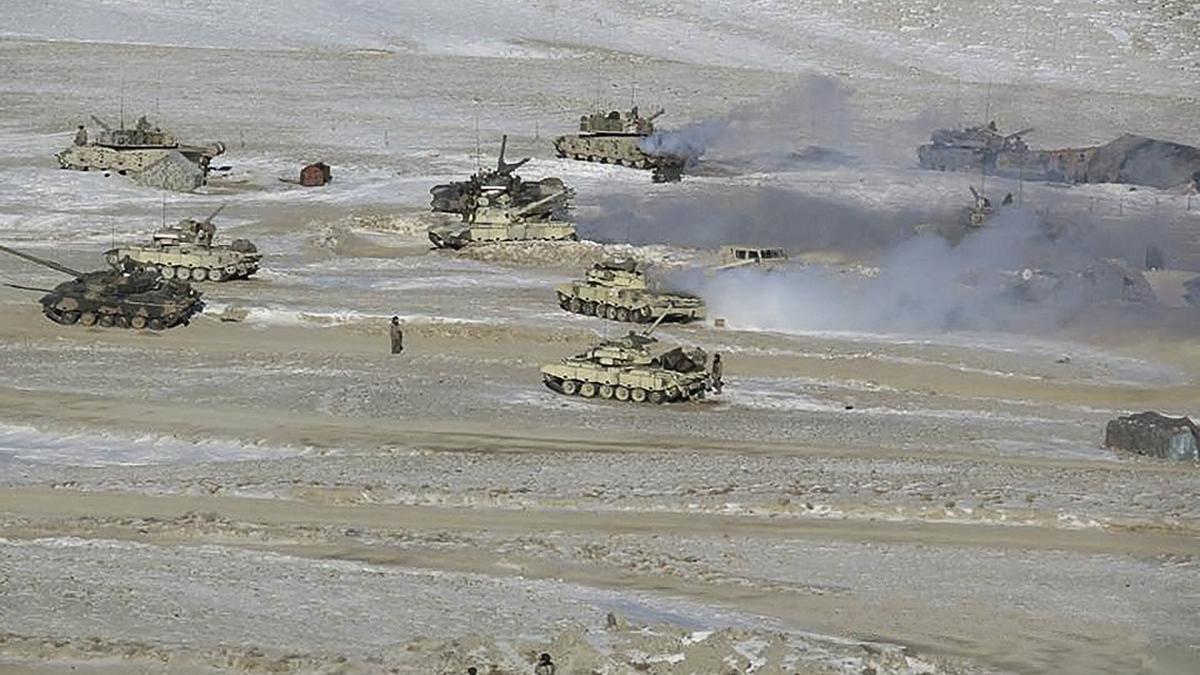
Why in News?
- Chinese nationals have started occupying several of their model “Xiaokang” border defence villages across India’s north-eastern borders which the country has been building along the LAC since 2019.
What’s in Today’s Article?
- What is the Line of Actual Control (LAC)?
- Disagreement over the LAC and Why these Claim Lines Controversial in Ladakh
- Recent Developments at the LAC
- Infrastructure Development at the LAC
What is the Line of Actual Control (LAC)?
- The LAC is the demarcation that separates Indian-controlled territory from Chinese-controlled territory.
- The LAC is only a concept not agreed upon by the two countries, neither delineated on a map or demarcated on the ground.
- India considers the LAC to be 3,488 km long, while the Chinese consider it to be only around 2,000 km.
- It is divided into three sectors: the eastern sector which spans Arunachal Pradesh and Sikkim, the middle sector in Uttarakhand and Himachal Pradesh, and the western sector in Ladakh.
- India’s claim line is the line seen in the official boundary marked on the maps as released by the Survey of India, including both Aksai Chin and Gilgit-Baltistan.
- This means LAC is not the claim line for India.
- In China’s case, LAC is the claim line except in the eastern sector, where it claims the entire Arunachal Pradesh as South Tibet.
Disagreement over the LAC and Why these Claim Lines Controversial in Ladakh:
- India rejects the concept of LAC, as it is the line China has created.
- The Chinese line was a disconnected series of points on a map that could be joined up in many ways.
- The line should omit gains from aggression in 1962 and therefore should be based on the actual position on September 8, 1962 before the Chinese attack.
- This vagueness of the Chinese definition left it opens for China to continue its creeping attempt to change facts on the ground by military force. For example, the clash in the Galwan valley between the Indian Army and China’s PLA in 2020.
- Aksai Chin in Ladakh province of the princely state of J&K was not part of British India, although it was a part of the British Empire.
- Thus, the eastern boundary was well defined in 1914 (when the Shimla Agreement on the McMahon Line was signed by British India) but in the west in Ladakh, it was not.
- These maps, as is officially used till date, formed the basis of dealings with China, eventually leading to the 1962 War.
Recent Developments at the LAC:
- In the last few months, the Chinese nationals have started occupying a couple of vacant defence villages built on its side of the LAC across from Lohit Valley and the Tawang sector of Arunachal Pradesh.
- China has been constructing 628 such “well-off villages” along India’s borders with the Tibet Autonomous Region, including along Ladakh and Arunachal Pradesh for over five years now.
- While the exact nature of these villages is unclear, the dwellings are understood to be “dual-use infrastructure” – for both civil and military purposes, and seen as a Chinese assertion of its territorial claims along the LAC.
Infrastructure Development at the LAC:
- The Chinese have consistently improved their existing infrastructure (along the LAC) including improving their connectivity through passes, constructing roads and bridges and their model villages.
- China has also been constructing infrastructure, including border villages, in Bhutanese territory.
- In the last three to four years, India has also stepped-up work on its border infrastructure – this includes improving forward connectivity, constructing alternate routes to the LAC as well as connecting them.
- Under the Vibrant Villages programmes, India plans to develop 663 border villages into modern villages with all amenities in the first phase.
- Of them, at least 17 along the borders with China in Ladakh, Himachal Pradesh, Uttarakhand, Sikkim and Arunachal Pradesh, have been selected for development as a pilot project under the programme.
- Also, three major highways are at different stages of construction in Arunachal Pradesh: the Trans-Arunachal Highway; the Frontier Highway; and the East-West Industrial Corridor Highway.

Why in news?
- Prime Minister Modi participated in the World Governments Summit in Dubai as Guest of Honour.
- He also delivered the special keynote address on the theme of the Summit – “Shaping the Future Governments”.
What’s in today’s article?
- World Governments Summit
- News Summary
World Governments Summit
- About
- The World Government Summit is a global platform dedicated to shaping the future of government worldwide.
- It is an annual event held in Dubai, United Arab Emirates.
- Each year, the Summit sets the agenda for the next generation of governments with a focus on how they can harness innovation and technology to solve universal challenges facing humanity.
- Since its inception in 2013, the Summit has championed the mission of shaping future governments and creating a better future for humanity.
- World Governments Summit Organization
- The World Governments Summit Organization is a global, neutral, non-profit organization dedicated to shaping the future of governments.
- Headquarter: Dubai, United Arab Emirates
- 2024 Summit: Theme – ‘Shaping Future Governments’
News Summary: World Governments Summit 2024
- At the invitation of Sheikh Mohamed bin Rashid Al Maktoum, Vice President, Prime Minister, Defence Minister, and the Ruler of Dubai, PM Modi participated in the World Governments Summit in Dubai as Guest of Honour.
Key highlights of the speech
- Minimum Government, Maximum Governance
- Prime Minister shared his thoughts on the changing nature of governance.
- He highlighted India’s transformative reforms based on the mantra of “Minimum Government, Maximum Governance”.
- Human- centric approach to governance
- Sharing Indian experience on how the country had leveraged digital technology to further welfare, inclusivity and sustainability, he called for a human- centric approach to governance.
- He also underlined India’s focus on people’s participation, last-mile-delivery and women-led development to achieve an inclusive society.
- Need for collaboration in inter-connected nature of the world
- PM emphasised that given the inter-connected nature of the world, governments must collaborate and learn from each other to address future challenges.
- Model of governance
- He highlighted that it was the need of the hour for governance to be Inclusive, Tech- smart, Clean and Transparent, and Green.
- In this context, he further emphasised that governments must prioritise – Ease of Living, Ease of Justice, Ease of Mobility, Ease of Innovation and Ease of Doing Business in their approach to public service.
- India’s commitment to Climate Change action
- Elaborating on India’s steadfast commitment to Climate Change action, he called for people to join Mission LiFE (Lifestyle for Environment) to create a sustainable world.
- Leadership role played by India
- Prime Minister elaborated on the leadership role played by India as the chair of G-20 last year, on a wide range of issues and challenges facing the world.
- In this context, he highlighted the efforts made by India to bring development concerns facing the Global South to the centre-stage of global discourse.
- Calling for reform of multilateral institutions, he pushed for greater voice for the Global South in its decision making.
- India, he stressed, will continue to contribute to global progress based on its role as a “Vishwa Bandhu”.
